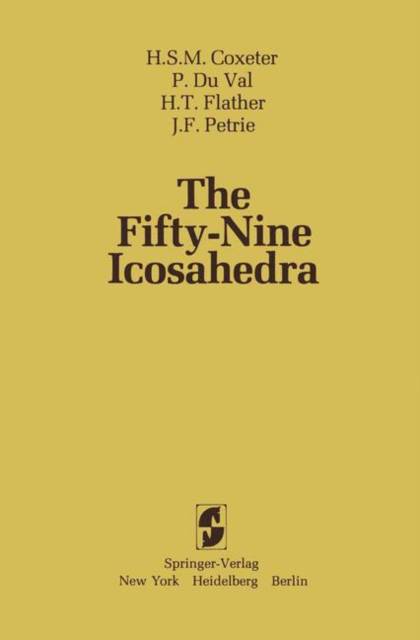
- Afhalen na 1 uur in een winkel met voorraad
- Gratis thuislevering in België vanaf € 30
- Ruim aanbod met 7 miljoen producten
- Afhalen na 1 uur in een winkel met voorraad
- Gratis thuislevering in België vanaf € 30
- Ruim aanbod met 7 miljoen producten
Zoeken
Omschrijving
The Fifty-Nine Icosahedra was originally published in 1938 as No. 6 of "University of Toronto Studies (Mathematical Series)". Of the four authors, only Coxeter and myself are still alive, and we two are the authors of the whole text of the book, in which any signs of immaturity may perhaps be regarded leniently on noting that both of us were still in our twenties when it was written. N either of the others was a professional mathematician. Flather died about 1950, and Petrie, tragically, in a road accident in 1972. Petrie's part in the book consisted in the extremely difficult drawings which consti- tute the left half of each of the plates (the much simpler ones on the right being mine). A brief biographical note on Petrie will be found on p. 32 of Coxeter's Regular Polytopes (3rd. ed., Dover, New York, 1973); and it may be added that he was still a schoolboy when he discovered the regular skew polygons that are named after him, and are the occasion for the note on him in Coxeter's book. (Coxeter also was a schoolboy when some of the results for which he will be most remembered were obtained; he and Petrie were schoolboy friends and used to work together on polyhedron and polytope theory. ) Flather's part in the book consisted in making a very beautiful set of miniature models of all the fifty-nine figures. These are still in existence, and in excellent preservation.
Specificaties
Betrokkenen
- Auteur(s):
- Uitgeverij:
Inhoud
- Aantal bladzijden:
- 47
- Taal:
- Engels
- Reeks:
- Reeksnummer:
- nr. 6
Eigenschappen
- Productcode (EAN):
- 9780387907703
- Verschijningsdatum:
- 4/11/1982
- Uitvoering:
- Hardcover
- Formaat:
- Ongenaaid / garenloos gebonden
- Afmetingen:
- 156 mm x 234 mm
- Gewicht:
- 95 g

Alleen bij Standaard Boekhandel
+ 167 punten op je klantenkaart van Standaard Boekhandel
Beoordelingen
We publiceren alleen reviews die voldoen aan de voorwaarden voor reviews. Bekijk onze voorwaarden voor reviews.











